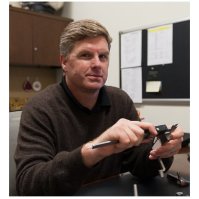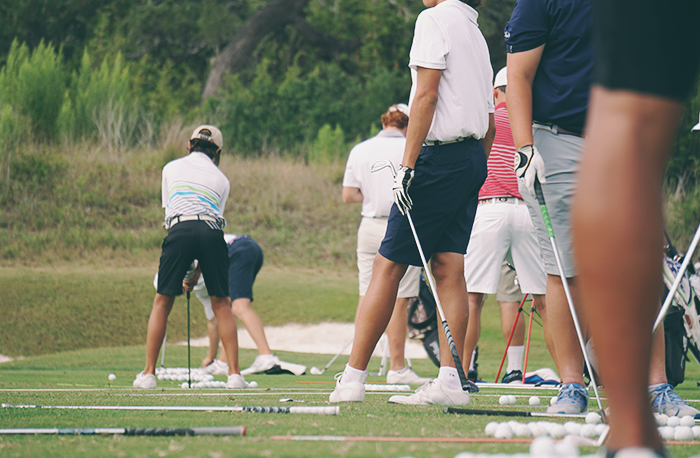[vc_tta_accordion active_section=”2″ collapsible_all=”true”][vc_tta_section title=”Read the entire transcript here…” tab_id=”1467515309632-8370c100-96d2″][vc_column_text]
Austie: Yeah the majority of what we do in putters is casting. But we do have a line of machine putters that we machine from forges. Whereas some people machine putter from billet steel. We do it from forging because we all forge the putter to a near nit shape. It’s just easier to machine it that way. It’s less material that you have to carve off of the putter so we can make them a little faster that way.
Cordie: What’s the definition of each of those? Casting and forging?
Austie: Well casting is called investment casting. So when you make a investment cast putter, you have to make a tool In order injack a wax representation of the putter. And then, that wax piece is put on what we call a tree which is a center column where they attach all these waxes to it and then they will dip it in a ceramic slurry, different ceramic slurry that build up this ceramic shell around those waxes. And they will put that whole tree into an oven to harden the ceramic and then the wax will melt out and that gives you basically a hollow shell that you can pour molten metal in. Basically cast, it’s called investment cast putter out of these stainless steel. It’s the way we make irons. It’s the same way we make titanium drivers. It’s the same sort of process. We pour molten metal in and it will harden and they will break off the ceramic around it, cut the metal off the tree and there you have the cast and you can polish them into a putter or an iron or a driver. It’s a really inexpensive fast way to make a bunch of parts. It’s very labor intensive but that’s why most of the manufacture is moved from the US. They move over to Mexico and now it’s moved to Asia because of the labor rate in terms of making those. A forged metal product is a little different because you will start with a bar of material and you will forge that into a shape that closely represents the shape of putter. And then that forging is then put into a CNC machine that basically the machines the putter, cuts the putter using putter bits and spindle heads out of the forging. And so that is a very time intensive process to be able to do that and the volume of parts that you can make there is a lot slower so that’s why machine parts are a lot more expensive than cast parts.
Cordie: Are there any pros and cons of those two routes to consider?
Austie: The machine parts you are able to put a lot richer finishes on them. From part to part will be a lot more consistent to putt than with the casting parts are. Although we have done, a lot of what we do with our suppliers that make the casting parts are working on ensuring the consistency from part to part versus the weight of the part as well as all the shape, the angles, what you see, the finish etc. It takes the finish to work to get the right standards to make sure they’re consistent. And so the machine parts you can do a lot richer looking finishes. The edges will be a lot crisper. They are more premium. They are more rare so there is that emotional connection to that type of product. From a performance standpoint, we can argue that if you have the same putter that’s machine versus cast, if you put an insert in both of those I think you’ll be hard press to feel the difference between. The look of them will be a lot different. So that golfer or the confidence of that golfer gets over the putter maybe different and then that emotional connection. That’s a really important part that I found over the years is that more than any other club in the bag golfers become very attached to that product because he use it more than any other golf club. And so they had relationships with them. Even today, there is a lot of golfers out there that have had the same putters since they were kids and they still use them. Others not so much so. They will throw them away every week and get a new putter. So I think it’s – and you know the machine putters as well they can do a lot of things in terms of using different materials in the same putter to achieve performance gains. And so we had a product that we have had over the years where we marry carbon steel of the putter in Thompson in order to get the center of gravity and the location that it enhances the roll of the ball. Get the center of gravity low and deep so we will do a Thompson flange at the back of the putter and that’s something it’s really hard to do in a casting to get the tolerances just right so the parts will marry up together. Whereas the machine part, you can machine up a bunch of flanges, a bunch of bodies, and you’ll get good together the same over time. And so, from that standpoint, machining has an advantage because you can do a lot more complicated things and play with materials to further enhance the mode of inertia and canter of gravity location on it.
[/vc_column_text][/vc_tta_section][/vc_tta_accordion]
Austie Rollinson
 Austie Rollinson is the Principal Designer for Odyssey and is a senior member of the Golf Club Innovation & Development team. His primary responsibility is leading the creation of all of the company’s products under the Odyssey brand. Austie has had this responsibility since Callaway Golf purchased Odyssey Golf in 1997.
Austie Rollinson is the Principal Designer for Odyssey and is a senior member of the Golf Club Innovation & Development team. His primary responsibility is leading the creation of all of the company’s products under the Odyssey brand. Austie has had this responsibility since Callaway Golf purchased Odyssey Golf in 1997.
During Austie’s 19 years at Callaway Golf he has helped to design numerous driver and iron products in addition to most all of the Odyssey putters since 1998. Under the watchful eye of Mr. Helmstetter and Roger Cleveland, he helped design many of the popular Callaway Golf and Odyssey products including the Big Bertha and Great Big Bertha drivers, X-series irons, Fusion drivers, White Hot and 2-Ball putters, and TriHot putters. He is also named on 300+ worldwide golf-related patents.



